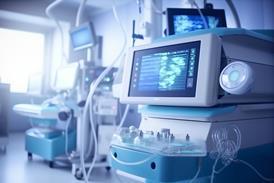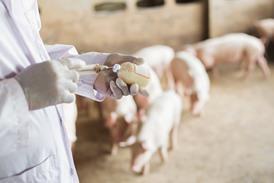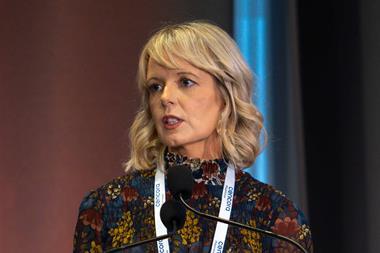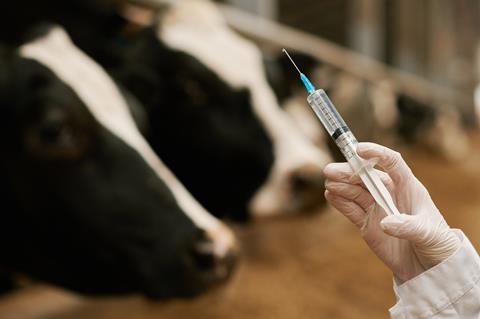
Through Regulation (EU) 2019/6, it has been the first time that so-called autogenous vaccines (AVs) are included in the EU legislation that rules veterinary medicinal products. Described as inactivated vaccines which are manufactured from pathogens obtained from animals in an epidemiological unit, they are restricted to the use in this epidemiological unit, or an epidemiological unit with a confirmed epidemiological link. As stated in Article 2 (3) not all provisions of Regulation (EU) 2019/6 apply, but only Articles 94 (GMP), 105 (veterinary prescription), 108 (record keeping), 117 (collection and disposal of waste), 120 (prohibition of advertising), 123 (control by competent authorities) and 134 (prohibiting supply). Article 106(5) ensures that AVs must only be used under exceptional circumstances and when a licensed vaccine is unavailable for the species and indication. Regulation (EU) 2019/6 stipulates for the first time, that GMP rules (Article 94) should also apply to the manufacture of AVs. Whilst an Implementing Act is still needed, Recital #70 of Regulation (EU) 2019/6 acknowledges that AVs will require their specific set of manufacturing rules, since their manufacturing process differs from that of so-called industrially prepared vaccines. Stakeholders are currently discussing the content of these rules and provisions. The prescribing veterinarian plays a key role in clarifying whether an approved vaccine is available, and also in defining the epidemiological unit. AVs are an additional tool to improve the availability of animal vaccines in general.
Licence notice
Copyright © 2015-2023 The Organisation for Professionals in Regulatory Affairs Ltd. T/A Regulatory Rapporteur − All Rights Reserved. This work is licensed to Hans-Joachim Selbitz for the purposes of academic and personal reasonable use only.
Notwithstanding this licence, no part of materials published in Regulatory Rapporteur may be reproduced without the express written permission of the publisher.
As a general rule, permission should be sought from the rights holder to reproduce any substantial part of a copyrighted work. This includes any text, illustrations, charts, tables, photographs, or other material from previously published sources.
To obtain permission(s) to re-use content published in Regulatory Rapporteur please email publications@topra.org.
To join TOPRA please click here.
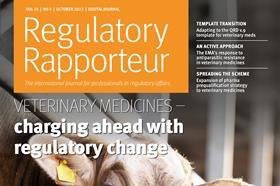
Regulatory Rapporteur
October 2023 | Volume 20 | No.9
Introduction
The introduction of Regulation (EU) 2019/6 represents a major step towards the further development of veterinary medicinal products legislation within the European Union. It replaces the previous Veterinary Medicinal Products Directive 2001/82/EC and as regulation it achieves a significantly higher degree of direct applicability in all member states. For the first time, so-called autogenous or herd-specific vaccines are now included in the harmonised legal framework of EU member states. Before January 2022, legislation regarding autogenous vaccines had been governed solely by national legislation and rules.
Autogenous Vaccines (AVs) are defined by Regulation (EU) 2019/6 under its article 2(3) as
“…inactivated immunological veterinary medicinal products which are manufactured from pathogens and antigens obtained from an animal or animals in an epidemiological unit and used for the treatment of that animal or those animals in the same epidemiological unit or for the treatment of an animal or animals in a unit having a confirmed epidemiological link.”
The development of vaccines for veterinary use has made great progress in recent years. The expansion of the portfolio of available vaccines should also be seen in light of the establishing alternatives to antimicrobials. On the other hand, it should be noted that, for economic reasons, understandably the development and approval of veterinary vaccines is focussed on products promising large sales in international markets. This naturally limits the available portfolio of licensed vaccines. There have been international discussions about this for years, associated with the terms minor uses, minor species (MUMS) and limited markets. It makes sense trying to increase availability and generally broaden the vaccine portfolio by facilitating approval procedures for such products. Autogenous vaccines (AVs) are an additional tool in support of improving the availability of immunogenic prophylaxis overall.
The EU Medicines Agencies Network Strategy to 2020[1] identified:“…increased availability of veterinary medicines…” as a priority task. Regulation (EU) 2019/6 takes this into account in its Recital (5) that:
“The regulation aims to…increase the availability of veterinary medicinal products, while guaranteeing the highest level of public and animal health and environmental protection.”
Autogenous vaccines prior to Regulation (EU) 2019/6
The term autogenous vaccine (AV), also farm-specific, herd-specific or flock-specific vaccine, is initially associated with the fact that these products are exempt from the obligation to obtain a marketing authorisation. This means that gaps in the vaccine supply can be closed relatively quickly. In return, their use is subject to very narrow limits, which will be discussed later. AVs have been used in several European countries, in some cases for many years. They were defined, but not regulated by EU law under Directive 2001/82/EC and were thus subject to national regulations before January 2022. This situation was comprehensively analysed and reference was made to the work on harmonisation and the coordination between the member states in this regard by Salery (2017).[2]
In preparation for Regulation (EU) 2019/6, the inclusion of AVs and thus the harmonisation process at European level was promoted by the results of a workshop organised in 2017 by the International Alliance for Biological Standardization (IABS) and Ghent University.
In 2017, the recommendations for the manufacture, control and use of inactivated autogenous veterinary vaccines within EEA (EMA/CMDv/452656/2016/REC-002-01) were also published.[3]
Regulation (EU) 2019/6 anchored AVs in European veterinary medicinal product legislation for the first time, thus creating the basis for suitable and legally secure manufacturing and use of this product group in future.[4]
Autogenous vaccines in Regulation (EU)2019/6
According to Article 2 (1), the scope of the regulation includes “…veterinary medicinal products prepared industrially or by a method involving an industrial process…”. This definition does not include AVs.
However, Article 2 (3) then extends the scope to products defined by the following conditions:
- Inactivated veterinary medicinal products.
- Products manufactured from pathogens and antigens obtained from an animal or animals in an epidemiological unit.
- Products used for the treatment of that animal or those animals in the same epidemiological unit, or for the treatment of an animal or animals in a unit having a confirmed epidemiological link.
It is noteworthy that for the products under Article 2(3), not all provisions of Regulation (EU) 2019/6 shall apply, only Articles:
-
94 − GMP
-
105 − Veterinary prescription
-
108 − Record keeping
-
117 − Collection and disposal of waste
-
120 − Prohibition of advertising
-
123 − Control by competent authorities
-
134 − Prohibiting supply.
Of the aforementioned provisions, only a few of the clearly specified rules of Regulation (EU) 2019/6 apply to AVs, therefore, all the remaining provisions of the regulation do not apply to AVs. This exclusion is of particular relevance to all provisions of the regulation on marketing authorisations (Articles 5-54), the union product database (Articles 55-72) and pharmacovigilance (Articles 73-84). For these areas, the member states may not introduce any additional provisions that restrict the manufacture or use of AVs.
Regulation (EU) 2019/6 specifies for the first time the need to apply good manufacturing practice (GMP) rules (Article 94) to AVs. However, an implementing act is still required. Recital (70) states:
“Although inactivated immunological veterinary medicinal products referred to in Article 2(3) should be manufactured in accordance with the principles of good manufacturing practice, detailed guidelines of good manufacturing practice should be prepared for those products since they are manufactured in a way that is different from industrially prepared products.”
This recital makes it clear that there is a need for specific manufacturing rules for these products.
In the same recital (70), the regulation also clearly explains, why the implementation of future manufacturing guidelines for AVs must be distinctly different from the already existing GMP rules for the manufacturing of licensed vaccines and balanced in such a way that these products continue to be maintained on the market:
“That would preserve their quality without hindering their manufacturing and availability.“
The product group of autogenous vaccines is characterized by an extraordinary variety of antigens, species and batch sizes. So far, the production is not only carried out in the laboratories of larger manufacturers of biological products, but also in many small laboratories, both in veterinary practices and in universities or public laboratories.
In particular, smaller batch sizes for single animals or for small animal populations limit the effort that can be spent on production in terms of costs.
The organisation of AV manufacturers, European Manufacturers of Autogenous Vaccines & Sera (EMAV), is contributing to the harmonisation process with the experience of the manufacturers and is combining their interests in order to keep as many of the existing products as possible available for the future. This should also contribute to the reduction of antibiotics use as well as improving animal welfare.
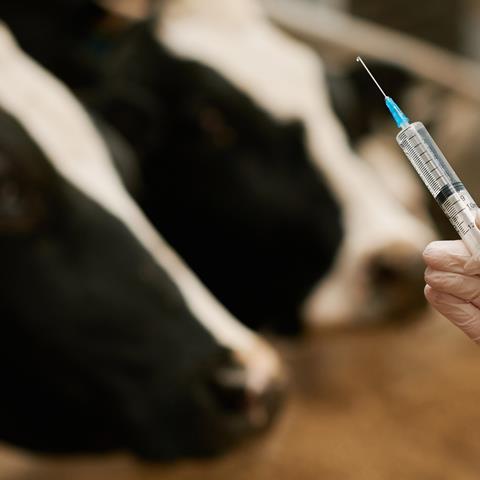
Article 93(2) specifies that implementing acts in relation to GMP are to be prepared and Article 153(4) specifies a period until 29 January 2025 at the latest for their adoption. The European Commission has given the European Medicines Agency (EMA) the mandate to prepare scientific advice on a corresponding draft for submission by 31 December 2023.[4] Based on Article 159 of Regulation (EU) 2019(6), the new future framework for AVs:
“…shall only start to apply from the date of application of the implementing acts laying down specific measures on good manufacturing practice for those veterinary medicinal products referred to in Article 93(2).“
Upon the adoption of the implementing act on GMP and the publication of specific manufacturing guidelines for AVs, a complex regulation will then be available for the first time for the group of AVs in the EU.
Article 94 (3) clarifies that a GMP certificate issued by the competent authority of a member state is binding for all member states:
“The conclusions reached following an inspection of a manufacturer shall be valid throughout the Union.”
Any manufacturer holding such a GMP certificate will therefore be allowed to supply prescribing veterinarians directly with AVs in all member states. The International Alliance for Biological Standardization (IABS) and EMAV brought together various stakeholders in an International Workshop in 2021 to discuss issues related to the implementation of Reg (EU) 2019/6 and the development of guidance documents for AVs.[5] Core points of the discussion included:
- Starting materials and seed.
- Premises and personnel.
- Manufacture and final batch control.
- Use of vaccines, import, export, surveillance.
Conclusions of this workshop were published (Grein, Jungbäck and Kubiak, 2022).[6]
Additionally, Article 106 (5) “Use of medicinal products” defines the conditions for the use of AVs and states that they
“…shall only be used in the animals referred herein in exceptional circumstances, in accordance with a veterinary prescription, and if no immunological veterinary medicinal product is authorised for the target species and the indication.”
This provision in Article 106(5) ensures that AVs must be used only under exceptional circumstances and only when no licensed vaccine is available for the species and indication.
Epidemiological unit and confirmed epidemiological link as basic terms
AVs are exempt from licensing requirements, they may only be used in animals belonging to epidemiological units, if the relevant pathogens/antigens have been isolated from animals belonging to this same unit or for the treatment of an animal or animals in a unit having a confirmed epidemiological link.
For the definition of an epidemiological unit, the veterinary medicinal products regulation 2019/6 uses an already existing definition from the Animal Health Law: the epidemiological unit is defined in Regulation (EU) 2016/429 Article 4 (39) as:“…a group of animals with the same likelihood of exposure to a disease agent.”
Any application outside epidemiological units is limited to animals with a confirmed epidemiological link to this epidemiological unit…
Any application outside epidemiological units is limited to animals with a confirmed epidemiological link to this epidemiological unit. This provision is of fundamental importance for the use of AVs. The veterinarian who intends to prescribe AVs must therefore first define the epidemiological unit in the specific case or document the reasons for an epidemiological link.
Such a confirmed epidemiological link may exist, for example, if young animals from a breeding stock A are moved to a stock B for rearing, in which a certain infection occurs. In this case, it may make sense to immunise animals in herd A with an AV containing pathogens from herd B, so that these animals arrive in herd B with a robust AV-based protection. It is understood that such decisions will remain under the responsibility of the prescribing veterinarian for the specific cases.
Compliance with these guidelines not only determines the future acceptance of the concept of AVs, but also has an indisputable influence on the actual efficacy of AVs. The Manual of AVs of the EMAV[7] contains scientific contributions on these topics. For definition of an epidemiological unit, Kreienbrock and Pfeffer (2023)[8] have elaborated a basis for allocation criteria. The importance of the terms ‘epidemiological unit’ and ‘confirmed epidemiological link’ was also highlighted at the cited workshop of IABS and EMAV.[6]
The determination of confirmed epidemiological links between different animal populations as a prerequisite for an application of AVs, depends on the pathogens, and pathogenesis of the corresponding infectious diseases as well as the animal species and the different husbandry methods. Scientific evaluations on these interrelations have been presented, referring to different kinds of livestock including poultry[9], pigs[10], cattle[11], small ruminants[12] and fish.[13]
EMAV position paper on future EU GMP guidelines for autogenous vaccines
The implementation of the provisions of Regulation (EU)2019/6 is currently underway and is of great importance for the adequate future manufacturing and use of AVs in the EU. A detailed position paper has been prepared by EMAV and presented for discussion.[14] This material defines , among others, requirements for the following responsible parties/sub-processes:
- Requirements for manufacturer.
- Isolation of the antigen used thereafter as starting material.
- Procedure for manufacture and formulation of the inactivated AVs.
- Labelling.
Special responsibility of the prescribing veterinarian
With the embedding of AVs into Regulation (EU) 2019/6, the prerequisites have been created for using this product group uniformly throughout the EU, thus contributing to improving the availability of veterinary vaccines. In practical terms, it is important to organise good cooperation between prescribing veterinarians, diagnosticians and manufacturers with the involvement of the competent authorities.
It is the task of the veterinarian in charge of the herd to monitor the infection situation in the herd under her or his care. This may include appropriate dissections of dead animals, or animals killed for diagnostic purposes. Accordingly, the veterinarian must ensure that material is properly collected for laboratory examinations and prepare a meaningful preliminary report for the laboratory. The bacteriological laboratory tests are also mandatory for the use of antibiotics.
The indication for the use of an AV may be made when no suitable approved vaccine is available. The prerequisite for such a decision is a veterinary diagnosis. From this diagnosis and the detected germ spectrum, it is possible to determine whether an approved vaccine is available. This involves the pathogen species, but also corresponding serovars, pathovars and virulence factors of the pathogens. Ultimately, a decision must be made as to whether the pathogen spectrum that has been identified and is likely to be causal for the disease event, can be controlled with an approved vaccine, or whether an AV is necessary.
It is not sufficient to refer solely to the detection of any molecularly proven strain differences. Rather, in the case of such differences, it must be evaluated whether they are relevant to the disease process and whether immunological differences are to be expected…
It is not sufficient to refer solely to the detection of any molecularly proven strain differences. Rather, in the case of such differences, it must be evaluated whether they are relevant to the disease process and whether immunological differences are to be expected. Both, from a legal perspective and from the perspective of AV efficacy, the selection of the pathogen strains used for production is a pivotal criterion. This selection can only be made by the prescribing veterinarian with his knowledge of the herd situation in consultation with the laboratory diagnostician. The manufacturer should be involved in these discussions but must be able to rely on the diagnosis of the prescribing veterinarian.
The next important decision, that of the epidemiological unit or the confirmed epidemiological link, can also only be made by the prescribing veterinarian, taking into account all the available findings.
Lastly, the correct administration of AVs in the animal population also lies in the responsibility of the prescribing veterinarian. He or she may need to conduct an AV safety trial on a small group of animals before vaccinating the entire herd. Even if there is no obligation for pharmacovigilance in the use of AVs, an exchange of information between prescribing veterinarians and manufacturers on findings regarding the safety and efficacy of AVs should be a matter of course. It would also be desirable if more experiences with AVs were evaluated and published. However, these are questions of scientific interest that should not lead to additional regulations.
Conclusion
Regulation (EU) 2019/6 embeds autogenous vaccines in European veterinary medicines legislation for the first time. This has created the conditions for these products to be used throughout the EU as a contribution to increasing vaccine coverage and the availability of veterinary vaccines.
Work is currently underway to implement specific GMP rules for the manufacturing of AVs. EMAV has submitted a detailed position paper on this subject.
Central aspects for the manufacturing and use of AVs are the limitation to the epidemiological unit in which the respective pathogens were isolated, or the extension to units with a confirmed epidemiological link, as well as to indications for which no approved vaccines are available. Prescribing veterinarians are primarily responsible for meeting these criteria, hence close collaboration with laboratory diagnosticians and manufacturers is important. It would be helpful for future guidance documents to focus on methods to prepare related decisions. However, the ultimate responsibility must rest with the prescribing veterinarian who cares for the animal population and prescribes the AVs.
References
[1] European Medicines Agency (2015) EU Medicines Agencies Network Strategy to 2020. (Accessed 31 August 2023).
[2] Salery M. (2017) Autogenous vaccines in Europe: National approaches to authorisation. Regulatory Rapporteur; 14(6), pp. 27-30.
[3] CMDv (2017) Recommendations for the manufacture, control and use of inactivated autogenous veterinary vaccines within the EEA. (Accessed 31 August 2023).
[4] European Commission (2022) Implementing measures under Article 93(2) of Regulation (EU) 2019/6.(Accessed 31 August 2023).
[5] IABS. Autogenous Vaccines: Quality of Production and Movement in a Common Market. (Accessed 6 June 2023).
[6] Grein K, Jungbäck C, Kubiak V. Autogenous vaccines: Quality of production and movement in a common market. Biologicals. (Accessed 31 August 2023).
[7] Behr KP, Zeller G, Selbitz HJ, editors. (2023) Manual of autogenous vaccines.
[8] Kreienbrock L, Pfeffer M. Basic epidemiological aspects.In Behr KP, Zeller G, Selbitz HJ, editors. Manual of autogenous vaccines; pp.15-26.
[9] Rautenschlein S, Bojesen AM. (2023) Autogenous vaccines for poultry. In Behr KP, Zeller G, Selbitz HJ, editors. Manual of autogenous vaccines; pp-155-169.
[10] Hennig-Pauka I. Autogenus vaccines for pigs. (2023) In Behr KP, Zeller G, Selbitz HJ, editors. Manual of autogenous vaccines; 170-187.
[11] Müller K. Autogenous vaccines for cattle. (2023) In Behr KP, Zeller G, Selbitz HJ, editors. Manual of autogenous vaccines: 188-208.
[12] Ganter M. Autogenous vaccines for sheep and goats. (2023) In Behr KP, Zeller G, Selbitz HJ, editors. Manual of autogenous vaccines: 209-211.
[13] Palic D. Autogenous vaccines for fish. (2023) In Behr KP, Zeller G, Selbitz HJ, editors. Manual of autogenous vaccines: 212-218.
[14] EMAV. EMAV Proposal: EU-GMP-Annex for Autogenous vaccines













